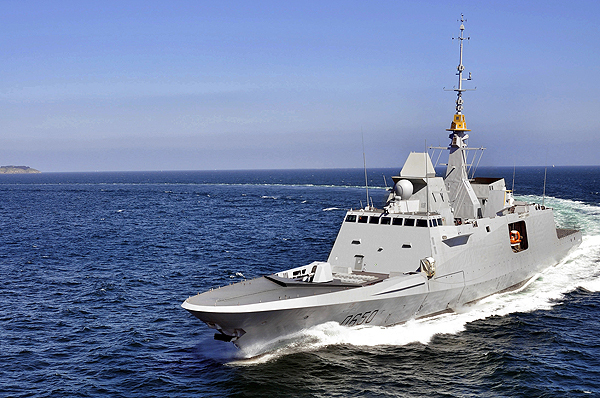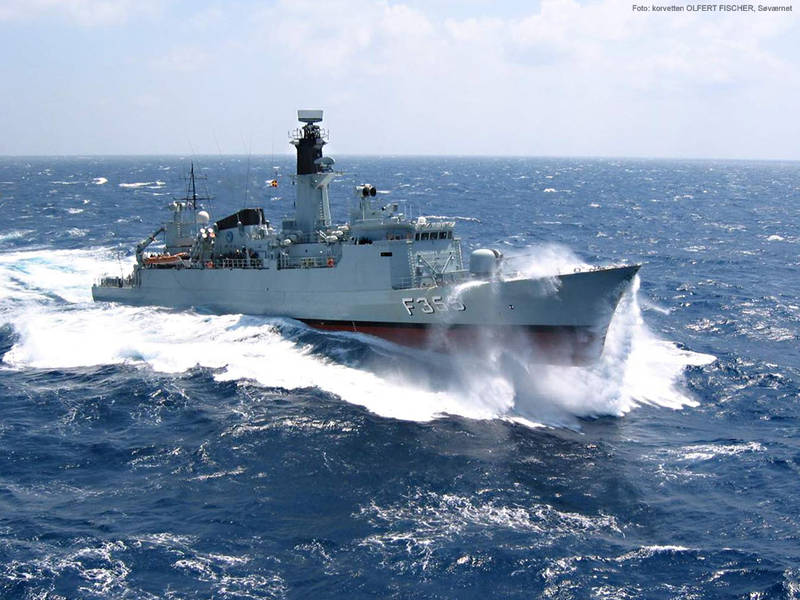
Welcome to MSW’s Scuttlebutt! Here’s the news for the day.

FREMM Aquitaine Completes Conclusive First Sea Trials
Source: DCNS
After three weeks of trials at sea, the first-of-class Aquitaine multimission frigate has returned to dock. The trials were a first opportunity to demonstrate the frigate’s impressive seakeeping qualities. Its manoeuvrability and propulsion system performance met especially the customer’s highest specifications.
FREMM Aquitaine’s crew comprised French Navy personnel, customer representatives, employees of DCNS and its partners. The chief objective of the mission was to demonstrate the frigate’s seakeeping and other nautical qualities and validate the performance of its propulsion and navigation systems.

“These initial sea trials with the first-of-class Aquitaine went very well indeed,” says Vincent Martinot-Lagarde, FREMM programme manager. “The objectives of this first period of sea trials were reached, with more than hundred tests successful. Te propulsion and manoeuvrability tests performed exactly as we predicted and in line with the customer’s expectations.”
These first tests in the ship’s ‘natural environment’ focused indeed on the two key elements of its performance: propulsion, manoeuvrability, and the navigation system. Over 100 tests were conducted successfully. The FREMM high-performance and state-of-the-art hybrid propulsion system (CODLOG: Combined Diesel eLectric or Gas) met the expectations. The Aquitaine was taken to its maximum speed of 27 knots. At this speed, it still had a considerable amount of power in reserve. During manoeuvrability tests, the ship also performed in line with the customer’s requirements. In particular, its turning circle and stopping distance were better than specification.
For DCNS, these first sea trials were a dual success. Not only did DCNS exceed the initial objectives of the mission, but the campaign also served to validate the overall work method devised for the FREMM programme, including the shore integration facility for warship exploitation systems. This facility simulates navigation and platform management and made a significant contribution to the smooth execution of the trials. Moreover, it also played an important role in helping the French Navy crew to fully familiarise themselves with the vessel before putting to sea.
“These first results are extremely positive and will help us to offer our export customers high levels of performance,” continues Vincent Martinot-Lagarde. “By demonstrating the high quality of our upstream work, the entire process has been validated.” An important milestone has been reached with these successful trials, which are further proof that the DCNS FREMM frigate is an extremely promising and competitive solution.
A major programme for DCNS and partners
Under the FREMM programme, DCNS will build 12 vessels: 11 for the French Navy and one for the Royal Moroccan Navy. FREMM frigates are the most technologically advanced and competitively priced on the world market. These heavily armed warships are being built under DCNS prime contractorship to carry state-of-the-art weapons and systems, including the Herakles multifunction radar, MdCN deep-strike cruise missiles, Aster anti-air missiles, Exocet MM40 anti-ship missiles and MU90 torpedoes.
FREMM multirole frigates are designed to respond to all types of threats with unparalleled flexibility, interoperability and availability. As demonstrated by the export contract with the Royal Moroccan Navy, they are also designed to meet the needs and expectations of international client navies.
FREMM technical data:
--Length overall: 142 metres
--Beam: 20 metres
--Displacement: 6,000 tonnes
--Max. speed: 27 knots
--Complement: 108 (incl. helicopter detachment)
--Accommodation: 145 men and women
--Range: 6,000 nautical miles at 15 knots
Two new U.S. Navy destroyers benefit from Aegis Combat Systems
Source: Lockheed Martin
U.S. Navy and Lockheed Martin engineers have installed the Aegis Combat System aboard two new Navy destroyers, USS Gravely (DDG 107) and USS Jason Dunham (DDG 109). The Aegis Combat Systems are certified as fully operational through Combat Systems Ship Qualification Trials, during which the ships' Aegis Combat Systems were evaluated for combat-readiness via comprehensive surface, subsurface, and anti-air warfare exercises, including manned raids and electronic attack scenarios, as well as testing of the systems' tactical data link and air defense capabilities.
"The Aegis systems installed on these two ships represent continued improvements to what is a very agile and capable Aegis system," explains Carmen Valentino, Lockheed Martin's vice president of Future Surface Combat systems. "Our Aegis team has delivered 15 technological evolutions to the Navy, taking the Aegis combat system from an anti-ship missile system to the basis for the U.S. approach to global missile defense."
The Aegis Weapon System includes the SPY-1 radar, which is considered the Navy's most advanced radar system and, when paired with the MK 41 Vertical Launching System, is capable of delivering missiles for missions and threat environments in naval warfare.
The Aegis Weapon System is now deployed on 95 ships worldwide. Aegis is the weapon system of choice for Australia, Japan, Norway, the Republic of Korea, and Spain, says a representative. Aegis-equipped ships combined have more than 1,200 years of at-sea operational experience and have launched more than 3,800 missiles in tests and actual operations.
The USS Gravely and USS Jason Dunham are Arleigh Burke-class guided-missile destroyers.

Battle of Attu
Today marks the anniversary of the Battle of Attu in which the US Navy landed the 7th Infantry Division on the Aleutian Island of Attu.

Escort Carriers Sailors and Airmen Association
Today’s website is Escort Carriers Sailors and Airmen Association. Enjoy.
This Day in U.S. Naval History
1862 - CSS Virginia blown up by Confederates to prevent capture.
1898 - Sailors and Marines from USS Marblehead cut trans-oceanic cable near Cienfuegos, Cuba, isolating Cuba from Spain.
1943 - Naval task force lands Army troops on Attu, Aleutians.
1965 - U.S. destroyers deliver first shore bombardment of Vietnam War.
Diorama Idea of the Day

Danish corvette HDMS OLFERT FISCHER navigates through heavy seas. To see the original high resolution photo, click here.
Gator











